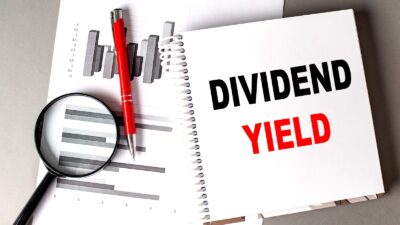Warren Buffett is the greatest investor of all time. A $10,000 investment in his company, Berkshire Hathaway, back in 1965, would now be worth somewhere around $90m. Clearly, his process is far superior to that of your average investor.
Today, I’m going to give you an insight into Buffett’s investment process and share with you three key financial ratios that he places a strong focus on. Incorporating these ratios into your own investment analysis could potentially boost your long-term investment returns significantly.
Low debt
One of the first things Warren Buffett looks for in a stock is low debt as this gives a company flexibility. An analogy is to think of a small speedboat versus a cruise ship. If both of these boats are travelling in the same direction at the same speed and suddenly come upon an obstacle, the speedboat is likely to be significantly more manoeuvrable. The cruise ship would be slow to react and would have difficulty avoiding the obstacle.
Should you invest £1,000 in British American Tobacco right now?
When investing expert Mark Rogers has a stock tip, it can pay to listen. After all, the flagship Motley Fool Share Advisor newsletter he has run for nearly a decade has provided thousands of paying members with top stock recommendations from the UK and US markets. And right now, Mark thinks there are 6 standout stocks that investors should consider buying. Want to see if British American Tobacco made the list?
It’s the same in business. A company with low debt has the flexibility to navigate the ever-changing business environment. In contrast, a company with high debt can get into trouble when business conditions are tough.
To analyse a company’s debt, Buffett uses the debt-to-equity ratio. This is how it’s calculated.
Debt to equity = total liabilities/total equity
It’s not hard to calculate. You’ll find both total liabilities and total equity on a company’s balance sheet. Buffett likes to see a ratio of under 0.5 here. This helps him avoid companies that are likely to get into trouble during economic downturns.
Cash is king
Do you ever find yourself running out of cash at the end of the month? If the answer is yes, you’ll know that it makes life difficult. The same can be said for businesses. Cash is king. As a result, Buffett likes to focus on companies that have enough cash to comfortably cover their short-term liabilities.
Here, Buffett uses the current ratio. It’s calculated by dividing current assets (cash and other assets that are expected to be turned into cash within 12 months) by current liabilities (liabilities that need to be paid within 12 months.)
Current ratio = current assets/current liabilities
You’ll find both current assets and current liabilities listed on a company’s balance sheet. Buffett likes to see a current ratio of at least 1.5. In other words, if a company always receives more cash than it pays out, it can always meet its short-term debt obligations in time.
Strong returns
Lastly, another key ratio that Buffett focuses on is return on equity (ROE). This ratio basically demonstrates the ability of management to generate a decent return on your money. The formula is:
Return on equity = net income/total equity
You’ll find net income on a company’s income statement. Total equity is found on the balance sheet.
Buffett likes to see a consistent ROE ratio of at least 8% over a 10-year period. This indicates that the company is consistently making a decent profit with the earnings that management retains.
So there are three key ratios that the greatest investor of all time uses regularly. Analysing these ratios when making your own investment decisions could be a good move if you’re looking to generate big returns from the stock market over the long term.







